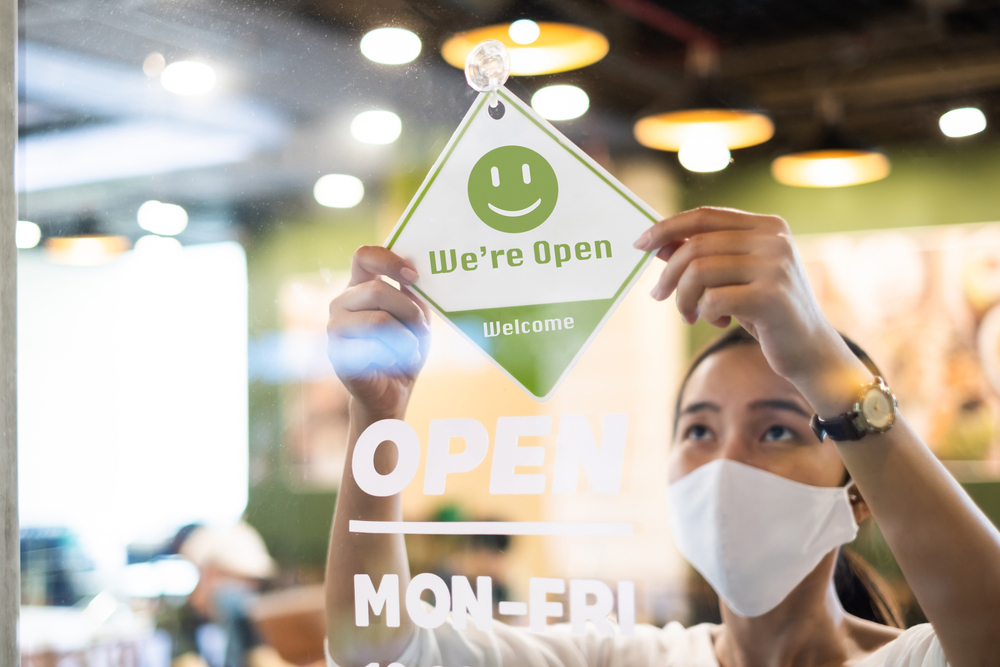Though the coronavirus rages on throughout the United States, many states have begun opening their economies. Researchers have been trying to understand how that has impacted employers across the country and what things look like now.
Today, we are happy to share with you the results of that research with regard to the status of businesses, second wave concerns, Paycheck Protection Program (PPP) status and hiring, reopening challenges, and more.
The research, conducted by Paychex, is part of an ongoing series designed to understand where businesses stand now, what their concerns are, and what their futures look like. As part of a 5-week survey series, Paychex polled 300 randomly selected business owners with 2–500 employees.
Open for Business?
For better or worse, the economy has opened up again. At this time, nearly half (49%) of businesses are open and fully operational. Of those that are open, 35% had been closed at one point due to the virus. That shows considerable positive movement from a business success standpoint.
Some additional data points include:
- 42% of businesses are open on a limited basis.
- 9% are closed but plan to reopen.
- Of those that are closed, 27% plan to open this month, 27% after July; 19% say they’ll open when business conditions improve, and 15% say as soon as they are allowed to.
The Second Wave
The research found that business owners are aware of and concerned about a potential second wave. In fact, 84% indicated they felt that way.
Among those organizations located in urban areas, 58% said they were very concerned about a second wave, compared with only 48% of business owners in rural areas. A second wave will be devastating for many businesses, with 38% saying they could not afford to close and reopen if a second wave occurs.
Challenges with Reopening
When asked what their major challenges with reopening were, the top three responses were:
- Too few customers are returning (26%).
- Customers are uncomfortable coming into the business (20%).
- Getting the word out they’re open (18%).
And while many indicated they do have challenges with reopening, 36% indicated they do not. Of those businesses that closed due to COVID-19, 44% say reopening has gone about as expected, and 12% say it’s gone better than expected.
PPP Status and Hiring
One goal of the research was to understand to what extent organizations took advantage of PPP loans. The research found that 34% of respondents have applied for a PPP loan. Among those 34%, 25% had 2–9 employees, 46% had 10–49 employees, and 47% had 50–500 employees.
Among those who applied, 64% have received payment. Another 15% say they have been approved but not gotten payment, and 10% submitted an application but have not gotten approval yet.
For many whose loans are in limbo, this is a critical time. Of those with an application approved or pending, 46% say it’s critical and they’ll go out of business without it; 46% say it’s important, but they’d survive without it.
Of those with an application approved or pending, 60% say the PPP loan will help them retain or rehire all employees; another 28% say it will help them retain or rehire at least half of their pre-COVID workforce.
PPP Flexibility Act
This act amended some of the provisions of the PPP loans concerning forgiveness of those loans. The research sought to understand how organizations felt about the updated legislation. What it found was that most owners feel this new legislation will be very impactful for their business:
- 90% say the forgiveness period extending from 8 to 24 weeks will be impactful (57% said it will be very impactful).
- 79% say the 60% being used for payroll will be impactful (48% said it will be very impactful).
- 78% say the forgiveness being allowed, even if the full workforce doesn’t return, in some cases, will be impactful (48% said it will be very impactful).
- 82% say the loan repayment term being extended from 2 to 5 years will be impactful (43% said it will be very impactful).
- 80% say the payroll taxes being deferred will be impactful (36% said it will be very impactful).
Permanent Workforce Changes
One of the big questions about sending everyone home to work was what happens when all is said and done. The research found that 24% of businesses will allow employees to work from home permanently post-COVID; this increases steadily with business size, as 36% of businesses with 50–500 employees will make this shift.
Also, professional service businesses are far more likely (36%) to institute permanent work-from-home policies. Twenty-three percent will permanently increase the use of technology to improve productivity, and 18% will offer flexible employee scheduling going forward.
The post COVID-19: The State of Business in the United States appeared first on HR Daily Advisor.
